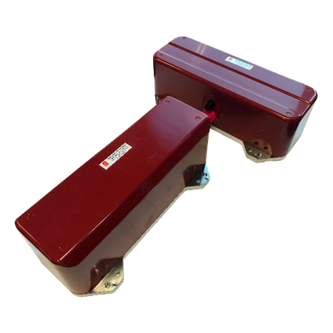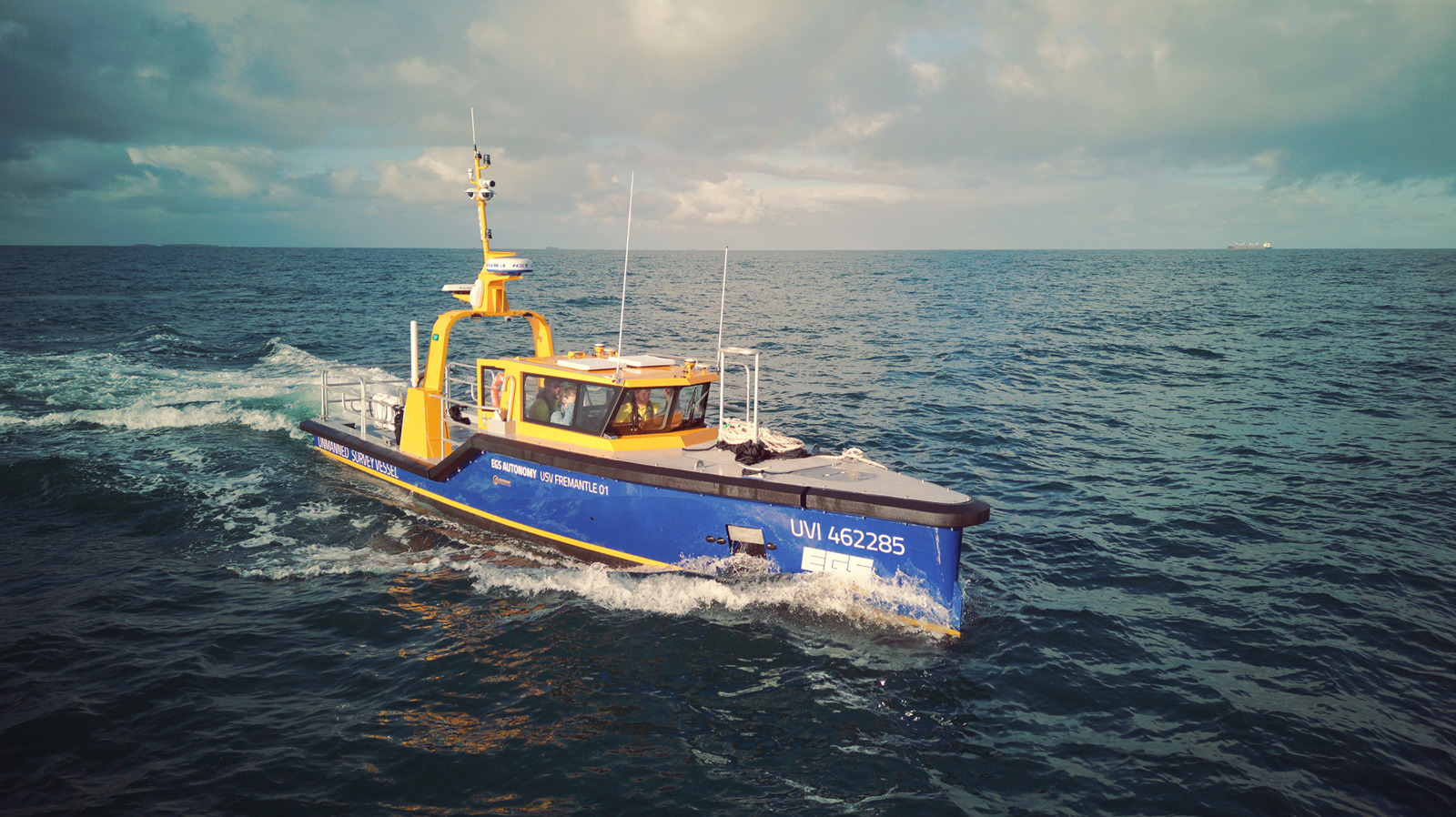
EGS’s hybrid USV offers ‘best of both worlds’ for demanding surveys
Officially launched, Fremantle 1 — the breakthrough USV from EGS Australia is ready to perform, aided in its mission with multibeam echo sounder from Kongsberg Discovery
-
Photo:Courtesy of EGS Australia
EGS Australia, a leader in regional hydrographic and geophysical surveying, has launched a breakthrough USV, the Fremantle 1. With the option of both manned and unmanned operations, the 12m long vessel is tailored for the most demanding tasks, aided in its missions by the market-proven, compact and powerful EM 2040 MKII multibeam echosounder from Kongsberg Discovery.
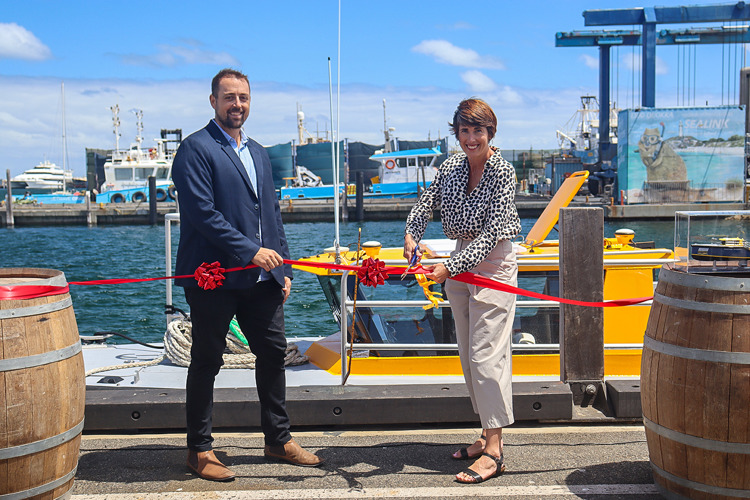
No one knows the waters surrounding Australia like EGS.
The expert team has spent the last two decades conducting high precision surveys of the region, unlocking insights for customers ranging from oil and gas firms to telecommunications providers, in addition to working with the Australian Government (EGS is currently one of nine panellists for the high profile HydroScheme Industry Partnership Program, HIPP).
With an operations base in Perth, and facilities in Sydney, EGS strives to offer complete coverage of Australian waters, conducting surveys from the Torres Strait to Tasmania, and from Dampier to Darwin.
It's a challenging remit, requiring innovative solutions, like the brand-new Fremantle 1.

Operational advantage
EGS Australia’s first USV offers a fresh twist on traditional survey assets. Empowered by a state-of-the-art autonomous control system, the diesel-powered vessel can operate without crew over a range of up to 2000 nautical miles, hitting speeds of 14 knots, or optimising long-term endurance with 7.5 knots sailing for up to 10 days at a time.
The ability for autonomous operations enhances utilisation, unlocking 24-hour availability (without the need to rest crews and change shifts) to maximise data collection, and make the most of weather windows, for demanding, time-sensitive missions. The cost and safety benefits of conducting the work without crews are compelling, especially in the often challenging and remote waters surrounding Australia.
However, EGS’ in-depth understanding of the evolving nature of the USV segment, and their clients’ needs, helped the team think ‘outside the box’ during development, as Charles Collins, Chief Surveyor, EGS Survey explains.
Maximising potential
“The advantages of unmanned operations are clear,” Charles comments, “delivering effective, economical and extended surveys, with the ability for rapid deployment. However, there’s no ‘one size fits all’ when it comes to providing high quality results. That’s especially true when you look at the range of operations we conduct, with the HIPP project in particular demanding real flexibility, as the Government aim for full bathymetric data coverage of Australia’s entire EEZ by 2050.
“We realised the ability to have manned missions would open up even greater potential for the Fremantle 1, enhancing the utilisation of this important asset. 99% of a typical survey area could be completed in an uncrewed mode, however there is usually a small fraction of the survey area that poses challenges. Whether it be an area close to a structure, reef or shipping channel. In these cases, rather than go through the rigors of mobilising a full additional vessel, the USV can be crewed and these areas can be completed when the weather is good. We see it as a clear case of the best of both worlds.”
On board for excellence
However, even the best USV won’t fulfil its potential without the right technical payload. And it’s here that Kongsberg Discovery steps on board.
EGS has opted to outfit Fremantle 1 with Kongsberg Discovery’s ultra high-resolution EM 2040 MKII multibeam echosounder. The EM 2040 is robust and powerful, making it an ideal choice for USV operations. The dual swath function allows unprecedented data capture rates with IHO special order data density able to be captured at speeds of over 8 knots. This is critical feature to enhance productivity for nautical charting surveys.
With a range from 200 to 700 kHz, frequencies can be tailored for optimal results, while wide area high frequency mapping capability is enabled with DRX for enhanced swath width, producing fast, efficient insights.
In addition, the fact that the EM 2040 is fully stabilised for Roll, Pitch and Yaw will help the Fremantle 1 and EGS tackle the shifting sea states around Australia. As it’s a small vessel prone to a greater degree of motion, the stability will be crucial in collecting high quality data in demanding conditions.
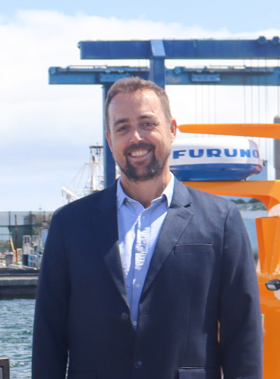
“We’re delighted to have Kongsberg Discovery on board the Fremantle 1 and look forward to working with the team to extend our relationship – including the introduction of the next generation EM 2042 – as we move ahead. It’ll be fascinating to see the Fremantle 1 in action in the years to come.”
-Charles Collins, Chief Surveyor at EGS Australia
Partnering for performance
“Kongsberg Discovery is, like EGS, an expert in this sector,” adds Charles “We already have a track record of success with the EM 2040, delivering high-resolution, clean bathymetric data, time after time. The data quality is second to none, while the flexibility and stability of the solution makes it ideal for a huge range of operations.
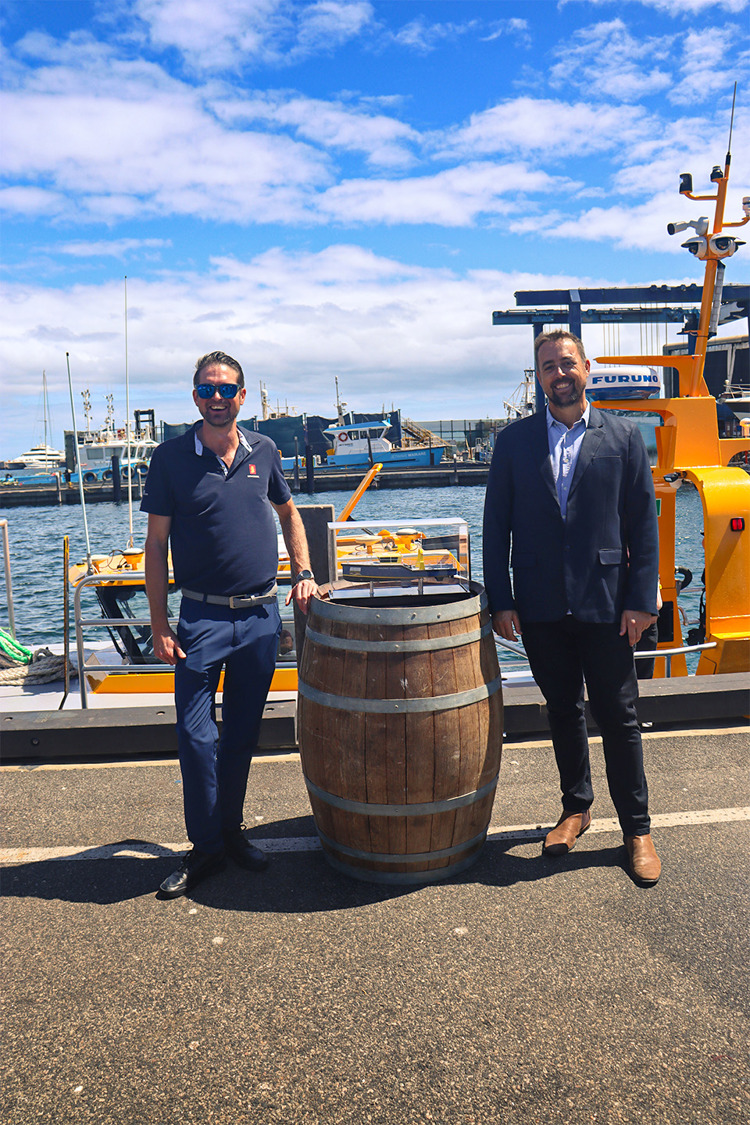
The Fremantle 1 was launched in January 2025 and underwent rigorous testing and sea trails at its base in Fremantle, Western Australia. Its first task will be contributing to the ongoing HIPP survey in Esperance, Western Australia. The challenging conditions and remote site will be a real test of the USVs robustness and reliability however the EGS team are confident in a successful project. The 2 month survey commences soon with final data capture ending in April 2025.
For further details please see www.egssurvey.com.au
Products used in survey

